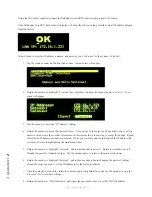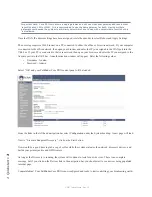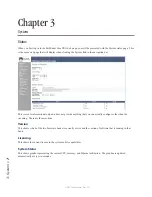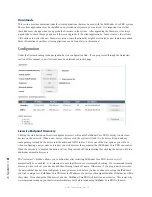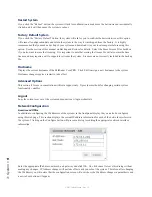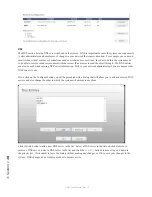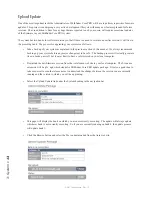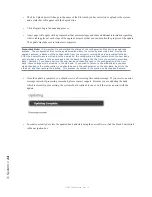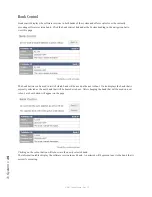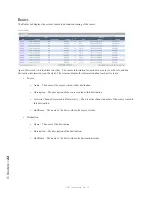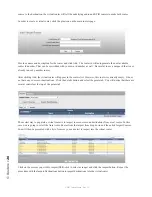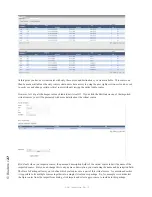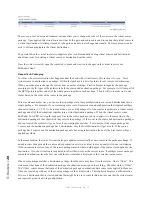
3: S
ys
te
m •
16
© 2017 Telos Alliance - Rev 1.2
It is important to understand some features of the bank selection process. When you select a new bank, the system
creates a temporary mark in the system to boot into that bank. After the system boots into the new bank, that
temporary mark is turned into a normal reboot setting so the newly selected bank will be used on subsequent
reboots. This is called cementing the bank. The reason this is important is that if something goes wrong with the
upgrade and the bank is unusable, the bank does not get cemented and rebooting the system either automatically or
by disconnecting power will cause the system to boot into the previously working bank. The new bank will only get
cemented for future boots if it boots successfully.
This also means that after rebooting into a new bank you should return to the bank control web page to make
sure the boot was successful and you are executing on the desired bank. If the boot fails, it could fail back to the
previous bank and you will only know that by double checking this page.
Important Note: We have occasionally seen some browsers try to cache the state of this page even
though we have requested in the web page code that the browser does not cache this data. So if you
reboot and the executing asterisk does not change, try refreshing the web page. Some browsers have an
extra button you can hold down while refreshing to force the web page to refresh rather than rely on the
cache. For example with google chrome, hold Shift and Cntrl while clicking the refresh icon to forcefully
reload the page.
It is also important to understand the state of configuration files between bank changes. Configuration files
reside within the executing bank. Therefore, if you are switching to a different bank the configuration may be
different. So it is recommended to take a backup of your configuration before switching banks, and then restore
that configuration on the new bank. If you are switching banks immediately after upgrading the firmware, then
this backup and restore has been already completed as part of the upgrade process. Otherwise, it is recommended
to review the backup and restore procedures earlier in this manual. Conversely this also means that if you make a
mistake in the configuration in a new bank, you can boot back into the old bank to get to an older and successfully
working configuration. Though using backups and restores is a more efficient way of doing this.
Services
Click the Services link on the navigation bar to view the Services page.
This page will only be used in conjunction with a session with Axia tech support, but it is worthwhile discussing
what this page represents. In an effort to make Pathfinder Core PRO as robust as possible, the system has a
sophisticated watchdog process. This process monitors the state of each of the services in the system. It is
responsible for sending ping messages to each service to make sure they are still responsive at the application layer.
If a service fails to respond within a certain period of time, the watchdog will restart the service. In a rare and
catastrophic situation where the watchdog is not able to achieve proper responsiveness of a service, it might also
restart all services or even after enough subsequent failures, reboot the system.

